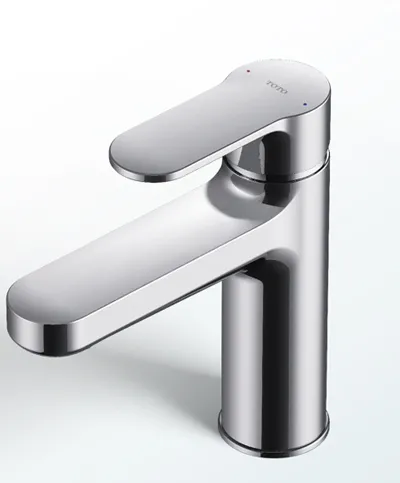We are living in an electronic age that has completely transformed architecture. Ideas, designs and plans are no more sketched but e-documented, and drawings are generated through the use of software. With India growing at a rapid pace, the potential of construction software to help build the country is immense. That said. despite the immense benefits, there may also be challenges for the architecture fraternity.
Popular picks
Indian architecture is anticipated to continue seeing immense growth in the use of newer software. According to Amol Prabhu, Partner, Shashi Prabhu & Associates, Sketchup and REVIT are gaining huge popularity, not only because they are powerful tools but owing to the availability of qualified people using these tools.
For its part, ANA Design uses the Autodesk CAD and REVIT suites. Amin Nayyar, CEO & Founder, says, “These are bundles of software that allow design, detailing and analysis across the spectrum of space planning; MEP design; site, drainage, roads and water management as well as energy optimisation. We also use HAP for energy modelling of HVAC systems.”
Meanwhile, CN Raghavendran, Managing Director, CR Narayana Rao (Consultants), lists the various software used for designing buildings: (Architectural) AutoCAD, REVIT, 3Ds Max, Lumion, Sketch Up, V Ray and Photoshop Adobe Acrobat; (civil) Civil 3D and Estimation Software; (climate and sustainability) Ecotect Analysis and Auto Desk 360 Green Building Studio; (structural) ETABS, STAAD Pro, Foundation Advanced, Advanced Engine Analysis, RCDC and SAFE; (MEP) CAD MEP, Navis Works and Dialux; and (construction programming) MS Projects.
While Kapil Aggarwal, Founder & Principal Architect, Spaces Architects@ka, prefers sketching manually for evolving and designing concepts at the initial stages, his firm otherwise opts to work on software like AutoCAD.
Transitioning to BIM
Transitioning from traditionally practiced to something more mechanical has never been easy to accept – but it’s an inevitable part of growth!
Design has evolved from a 2D base to an integrated 3D digital interface. Building information modelling (BIM) helps construct a building virtually before it is built on site. Data relevant to the building is integrated and BIM manages an information exchange between architects, engineers and contractors involved in a project.
However, has BIM been fully accepted in the Indian scenario?
“There is certainly a change, albeit slow,” replies Nayyar.
“In fact, to a certain extent, the change is being brought about owing to expectations from the client organisations.
There is also a move to digitise urban infrastructure and the format of design and project delivery using BIM, as it fits well in the system. The strength of its planning and analytics is also being harnessed by construction companies.”
Aggarwal sees many positive changes coming about with the adoption of BIM in India.
“BIM is just not about the geometry,” he points out. “It covers spatial relationships, light analysis, and quantities and properties of building components.”
Amid all the benefits, for Prabhu, the present constraint in the use of BIM is the cost involved and lack of experts.
Also, Raghavendran shares, “At CRN, we were one of the earliest organisations to use REVIT (architecture, structure and MEP) and BIM including Navis Works and Clash Detection.” He adds that while some of the firm’s major projects are fully captured on BIM, its penetration in India has several bottlenecks, as below:
- “The full advantage of using BIM as a model containing all information of the building can be derived only if the entire chain of design to implementation is aligned with BIM as a medium of information sharing. Unfortunately, BIM development stops with the award of work to the contractor. Most contractors who execute several components of building work do not possess BIM capability or infrastructure to work with BIM as a main input, whereas, they are comfortable with 2D drawings and information in bits and pieces and not as a holistic model, that too at site level, where it can make the biggest contribution. This compels the project application of BIM to quit after the midway stage, without deriving its full benefits – not only until completion of construction but for future additions and alterations as well as building maintenance and operation.
To our knowledge, the use of BIM after completion is rare and almost non-existent in India.
- Also, software providers are not taking a holistic view of the Indian market when it comes to their pricing and packaging policies. First, BIM-related software is so highly priced that it can never become a regular workhorse for consultants unless there is a specific compulsion.
Also, BIM as a standard will spread through all stages of construction and model agencies involved in construction only if the pricing policies are relevant to Indian conditions. Plus, the bundling of packages in most of the software tends towards a strange concoction. Not everybody in a design or execution team who uses building software needs a comprehensive package covering different disciplines. When someone wants a ‘plain Jane’ for regular production work, why dump structural, MEP packages into the concoction marketed as one bundle package? Flexibility of software must be left to the end-user and not predetermined by the seller. Of course, sellers have their own rationale but I think this concept has not been welcomed well. This view will not be exactly liked or appreciated by software sellers, but if they want an India-sensitive product, they must realise how the Indian building industry has evolved and will evolve, in addition to cost-sensitiveness.”
- SHRIYAL SETHUMADHAVAN



















